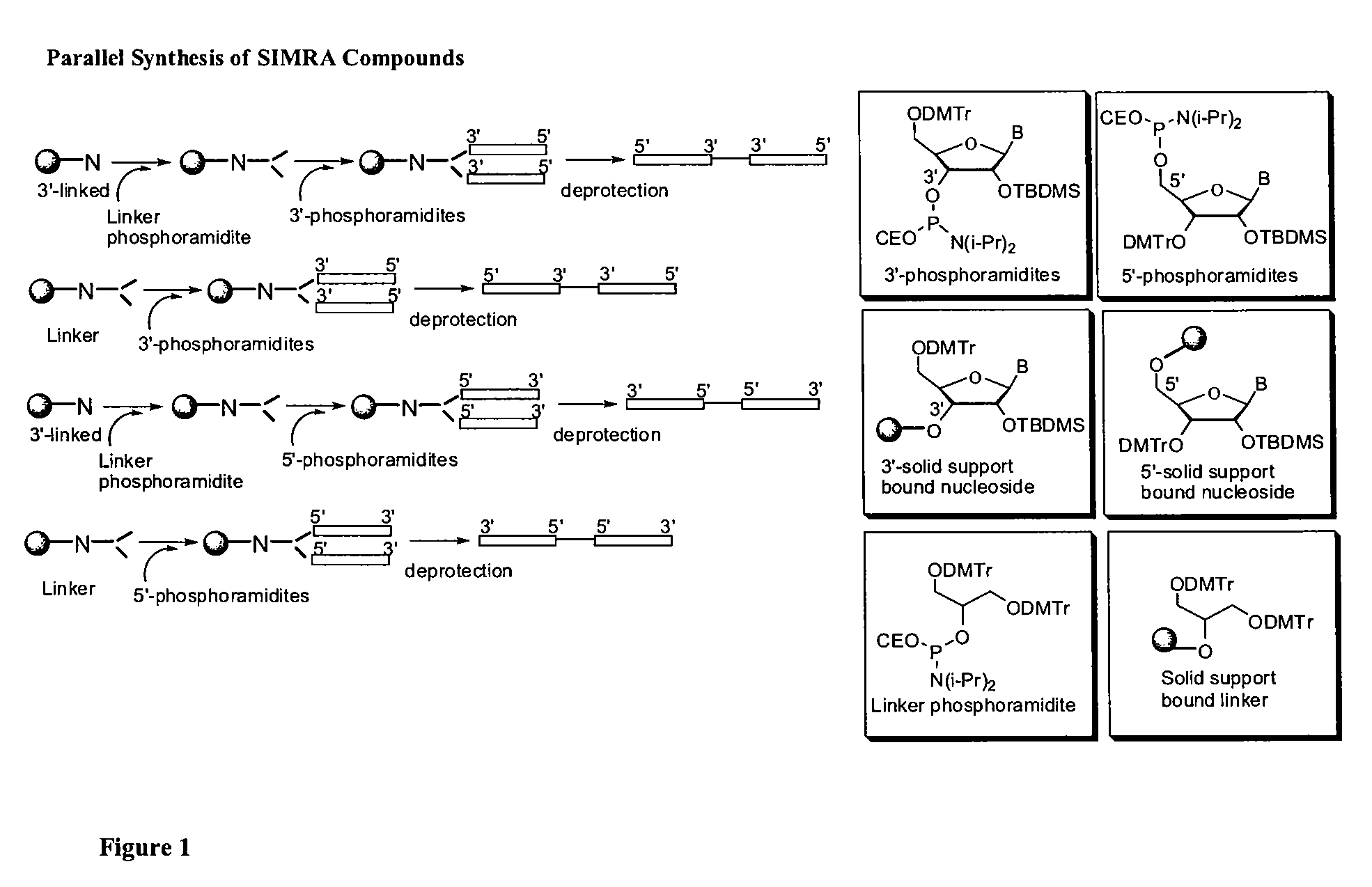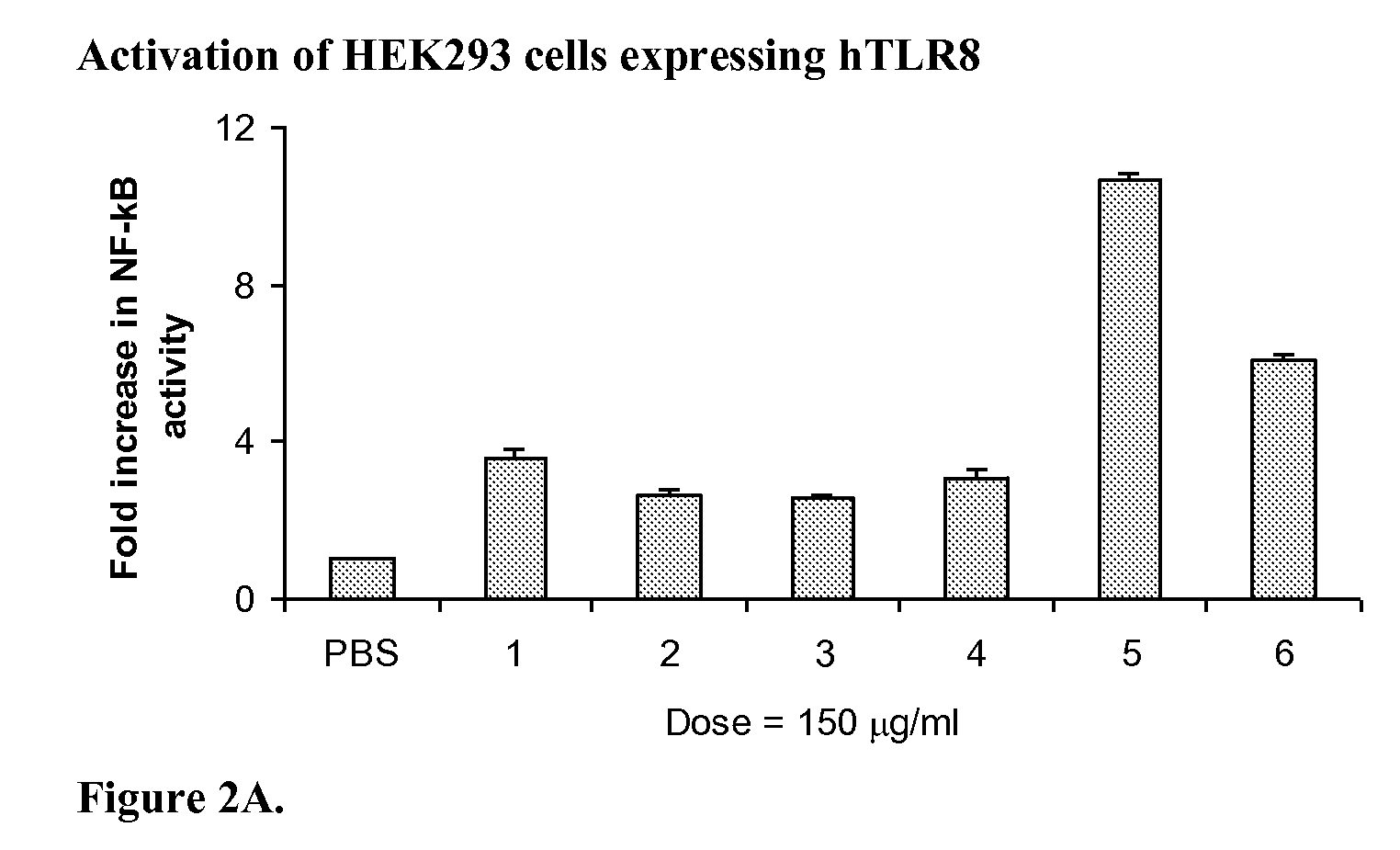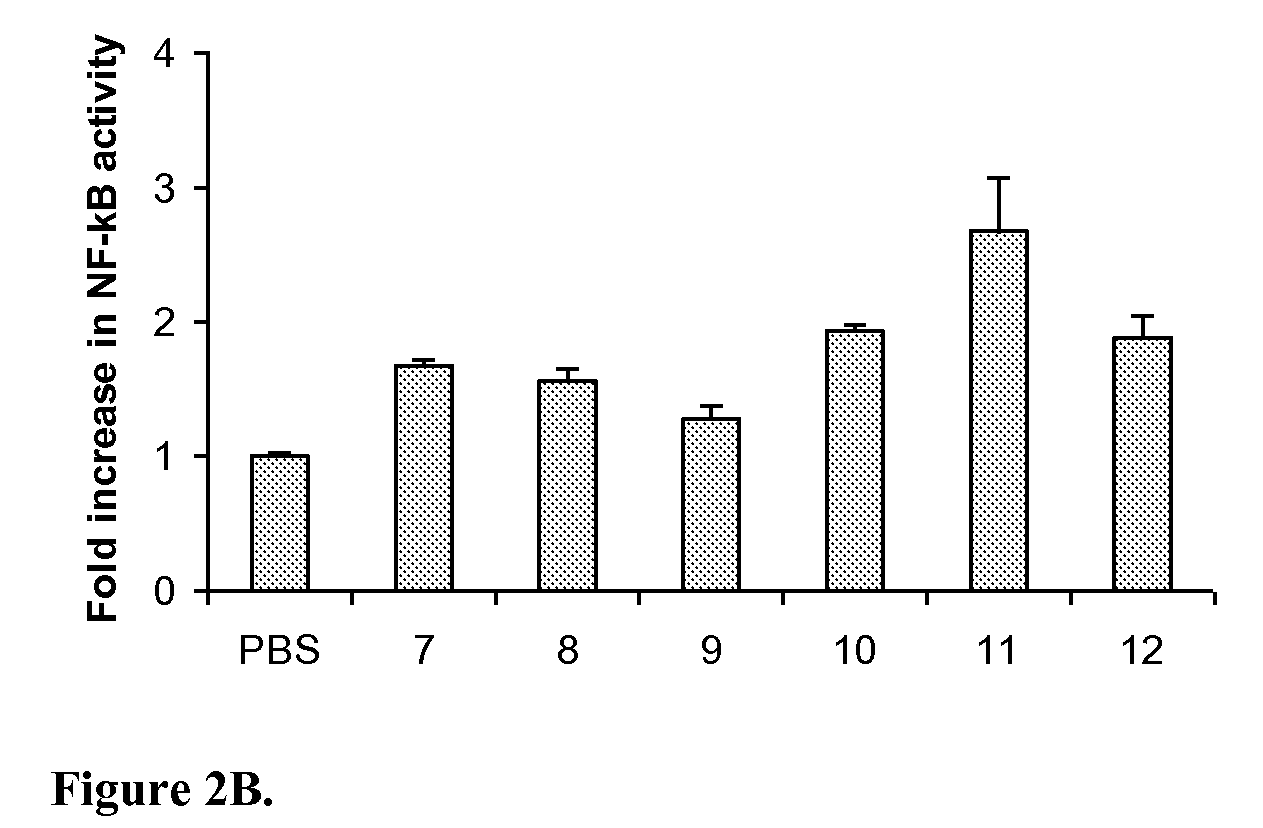Stabilized immune modulatory RNA (SIMRA) compounds
a technology of immune modulatory and immunomodulatory molecules, applied in the direction of antibody medical ingredients, drug compositions, immunological disorders, etc., can solve the problems of affecting the efficacy and immune modulatory activity of these molecules, and impede the use and application of these molecules. achieve the effect of exonuclease digestion
- Summary
- Abstract
- Description
- Claims
- Application Information
AI Technical Summary
Benefits of technology
Problems solved by technology
Method used
Image
Examples
example 1
Immune Modulatory Oligoribonucleotide Synthesis
[0123]The immune modulatory oligoribonucleotides were chemically synthesized using phosphoramidite chemistry on automated DNA / RNA synthesizer. N-acetyl protected (Except U) 2′-O-TBDMS RNA monomers, A, G, C and U, were purchased from Sigma-Aldrich. 7-deaza-G, inosine was purchased from ChemGenes Corporation. 0.25M 5-ethylthio-1H-tetrazole, PAC-anhydride Cap A and Cap B were purchased from Glen Research. 3% trichloroacetic acid (TCA) in dichloromethane (DCM) and 5% 3H-1,2-Benzodithiole-3-one-1,1-dioxide (Beaucage reagent) were made in house.
[0124]Immune modulatory oligoribonucleotides were synthesized at 1-2 μM scale using a standard RNA synthesis protocol.
Cleavage and Base Deprotection
[0125]Immune modulatory oligoribonucleotides were cleaved from solid support and the protecting groups of exo-cyclic-amines were removed in methylamine and ammonium hydroxide solution. The resulting solution was dried completely in a SpeedVac.
IE HPLC Purifi...
example 2
Protocols for Assays with HEK293 Cells Expressing TLRs
[0128]HEK293 or HEK293XL / human TLR7 or HEK293 or HEK293XL / human TLR8 cells (Invivogen, San Diego, Calif.) were cultured in 48-well plates in 250 μl / well DMEM supplemented with 10% heat-inactivated FBS in a 5% CO2 incubator.
Reporter Gene Transformation
[0129]HEK293 or HEK293XL cells stably expressing human TLR7 or TLR8 (Invivogen, San Diego, Calif.) were cultured in 48-well plates in 250 μl / well DMEM supplemented with 10% heat-inactivated FBS in a 5% CO2 incubator. At 80% confluence, cultures were transiently transfected with 400 ng / ml of SEAP (secreted form of human embryonic alkaline phosphatase) reporter plasmid (pNifty2-Seap) (Invivogen) in the presence of 4 μl / ml of lipofectamine (Invitrogen, Carlsbad, Calif.) in culture medium. Plasmid DNA and lipofectamine were diluted separately in serum-free medium and incubated at room temperature for 5 minutes. After incubation, the diluted DNA and lipofectamine were mixed and the mixtur...
example 3
Human Cell Culture Protocols
Human PBMC Isolation
[0132]Peripheral blood mononuclear cells (PBMCs) from freshly drawn, healthy volunteer blood (CBR Laboratories, Boston, Mass.) were isolated by Ficoll density gradient centrifugation method (Histopaque-1077, Sigma).
Human pDC Isolation
[0133]Peripheral blood mononuclear cells (PBMCs) from freshly drawn healthy volunteer blood (CBR Laboratories, Boston, Mass.) were isolated by Ficoll density gradient centrifugation method (Histopaque-1077, Sigma). pDCs were isolated from PBMCs by positive selection using the BDCA4 cell isolation kits (Miltenyi Biotec) according to the manufacturer's instructions.
Human mDC Isolation
[0134]Peripheral blood mononuclear cells (PBMCs) from freshly drawn healthy volunteer blood (CBR Laboratories, Boston, Mass.) were isolated by Ficoll density gradient centrifugation method (Histopaque-1077, Sigma). Myeloid dendritic cells (mDCs) were isolated from PBMCs by positive selection using the BDCA4 cell isolation kits (...
PUM
| Property | Measurement | Unit |
|---|---|---|
| OD | aaaaa | aaaaa |
| length | aaaaa | aaaaa |
| molecular weight | aaaaa | aaaaa |
Abstract
Description
Claims
Application Information
 Login to View More
Login to View More - R&D
- Intellectual Property
- Life Sciences
- Materials
- Tech Scout
- Unparalleled Data Quality
- Higher Quality Content
- 60% Fewer Hallucinations
Browse by: Latest US Patents, China's latest patents, Technical Efficacy Thesaurus, Application Domain, Technology Topic, Popular Technical Reports.
© 2025 PatSnap. All rights reserved.Legal|Privacy policy|Modern Slavery Act Transparency Statement|Sitemap|About US| Contact US: help@patsnap.com



